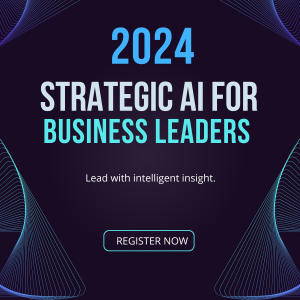AI GLOSSARY - G
Definition: A type of neural network architecture where two networks, typically called the generator and the discriminator, are trained simultaneously. The generator learns to create data resembling the training set, while the discriminator learns to differentiate between the generated data and real data.
Definition: A search heuristic inspired by the process of natural selection that belongs to the larger class of evolutionary algorithms. Genetic algorithms are used to generate high-quality solutions to optimisation and search problems by relying on bio-inspired operators such as mutation, crossover, and selection.
Definition: A first-order iterative optimisation algorithm for finding the minimum of a function. In machine learning, it’s used to minimise a loss function by iteratively moving towards the steepest descent direction.
Definition: A type of neural network which directly operates on the graph structure. It uses the graph’s nodes and edges to capture spatial and relational information that traditional neural networks cannot easily model.
Definition: An exhaustive searching through a manually specified subset of the hyperparameter space of a learning algorithm. It is a common method to tune hyperparameters to improve the model’s performance.
Definition: An algorithmic paradigm that follows the problem-solving heuristic of making the locally optimal choice at each stage with the hope of finding the global optimum.
Definition: In machine learning and data science, ground truth refers to the accuracy of the training set’s classification for supervised learning techniques. It is what the model aims to predict or approximate.
Definition: A stochastic process where every point in some continuous input space is associated with a normally distributed random variable. It is used in machine learning for designing sophisticated predictive models, particularly in regression and classification problems.
Definition: A Markov chain Monte Carlo (MCMC) algorithm used for obtaining a sequence of observations which are approximated from a specified multivariate probability distribution, when direct sampling is difficult.
Definition: The ability of a model to perform well on new, unseen data, derived from the same distribution as the one used to create the model.
Definition: A type of recurrent neural network (RNN) used in deep learning that can manage data points in sequences effectively. It is similar to a long short-term memory (LSTM) with only two gates and a simplified structure, making it faster and less complex.
Definition: A field of study in machine learning that extends deep neural models to graph/manifold structured data including networks, 3D meshes, and social media graphs.
Definition: A theoretical framework for conceiving social situations among competing players. In AI, it is used to model strategic interactions where the outcome for each participant depends on the actions of others.
Definition: A measure used in decision trees and CART (Classification and Regression Trees) algorithms to determine how often a randomly chosen element from the set would be incorrectly labeled if it was randomly labeled according to the distribution of labels in the subset.
Definition: A machine learning technique used for regression and classification problems, which produces a prediction model in the form of an ensemble of weak prediction models, typically decision trees.
Definition: A type of evolutionary algorithm that automatically constructs computer programs. The programs are represented as tree structures, and they evolve to solve, or perform well on, a problem.
Definition: Statistical models that convey dependencies between variables using a graph. These models are used extensively in machine learning for the representation and resolution of problems with multiple interconnected variables.
Definition: The mathematical interpretation of a human motion by a computing device. Gesture recognition enables humans to interface with the machine and interact naturally without any mechanical devices.
Definition: A probabilistic model that assumes all the data points are generated from a mixture of a finite number of Gaussian distributions with unknown parameters.
Definition: A database that uses graph structures for semantic queries with nodes, edges, and properties to represent and store data. It provides transactional integrity and operational availability, making it suitable for AI applications that require rapid, real-time graph computations.
Definition: A type of semi-supervised learning where the learning algorithm is provided with hints or partial solutions to the learning problem, helping to shape the learning process.
Definition: An emerging computing paradigm of information processing that concerns the processing of complex information entities called “granules,” which arise in the process of data abstraction and derivation of knowledge from information.
Definition: These are a class of machine learning models that focus on producing or generating new content that is similar to the data they were trained on. Essentially, these models learn the underlying patterns, distributions, or features of a dataset and can then use this learned information to generate completely new data instances that haven’t been seen before but resemble the training data. They contrast with discriminative models that categorise input data.
Definition: A continuous distribution that approximates a categorical distribution, allowing easier optimisation by gradient descent, often used in machine learning contexts where sampling from a categorical distribution is needed.
Definition: Often referred to as strong AI, this is a type of artificial intelligence that can understand, learn, and apply knowledge in a broadly generalisable way across a wide range of tasks, much like a human’s cognitive abilities.




